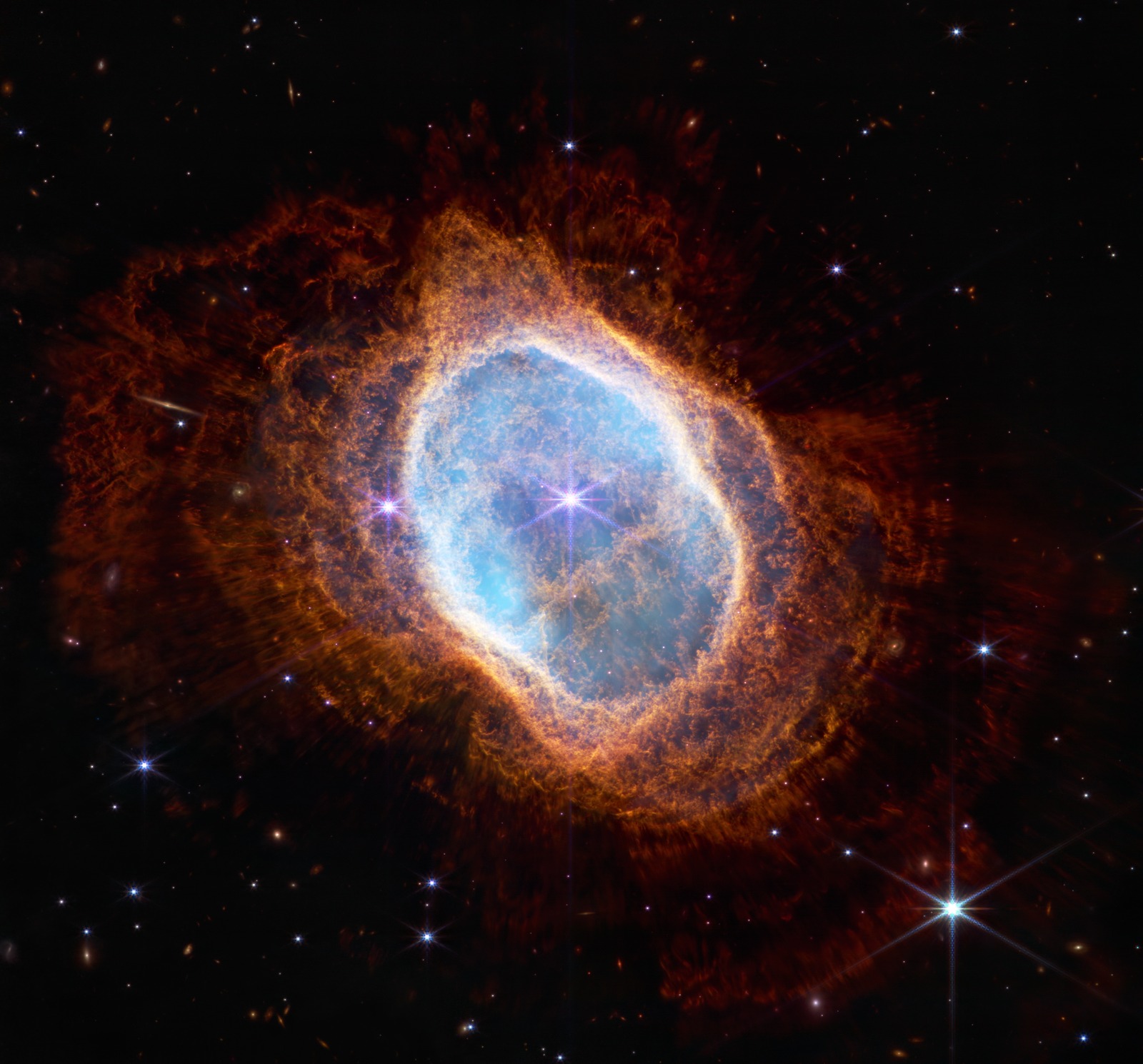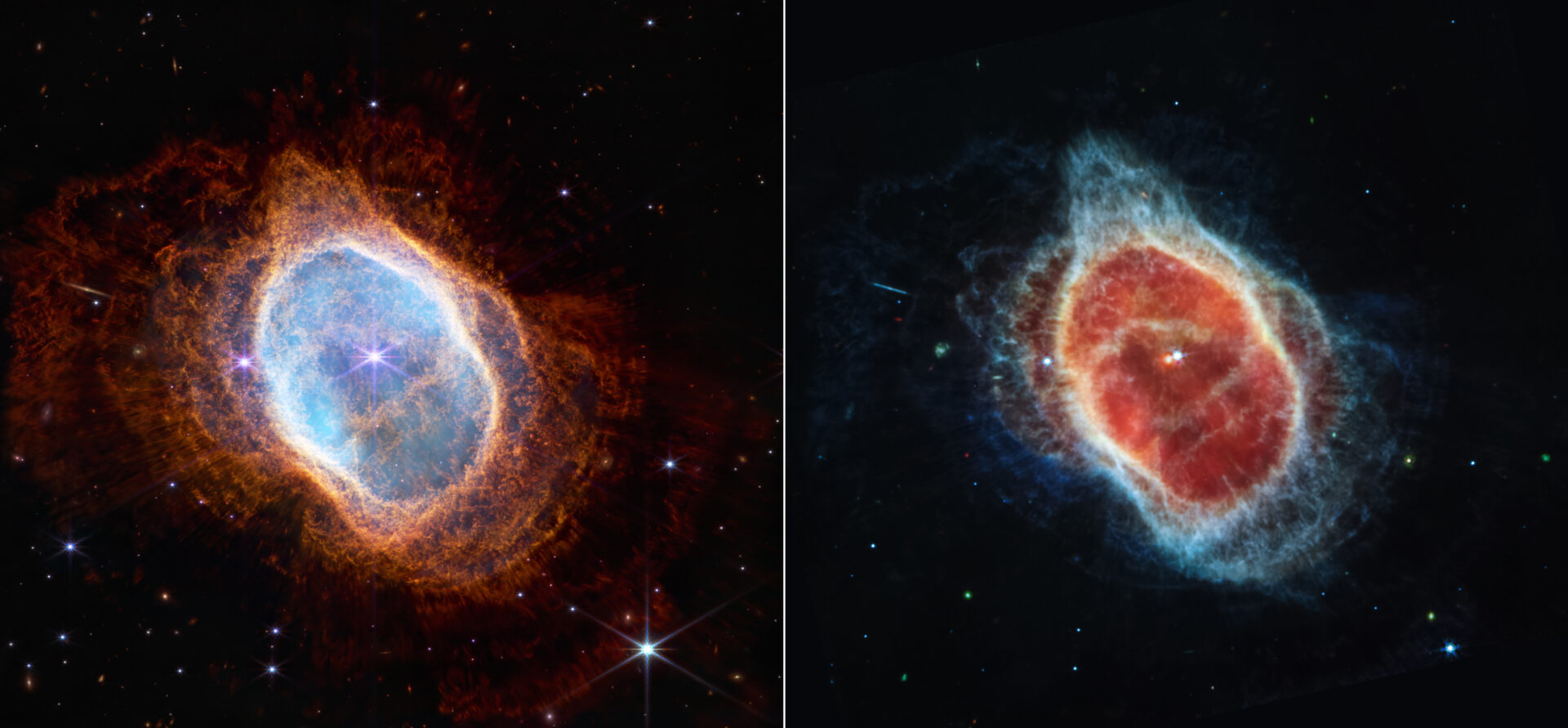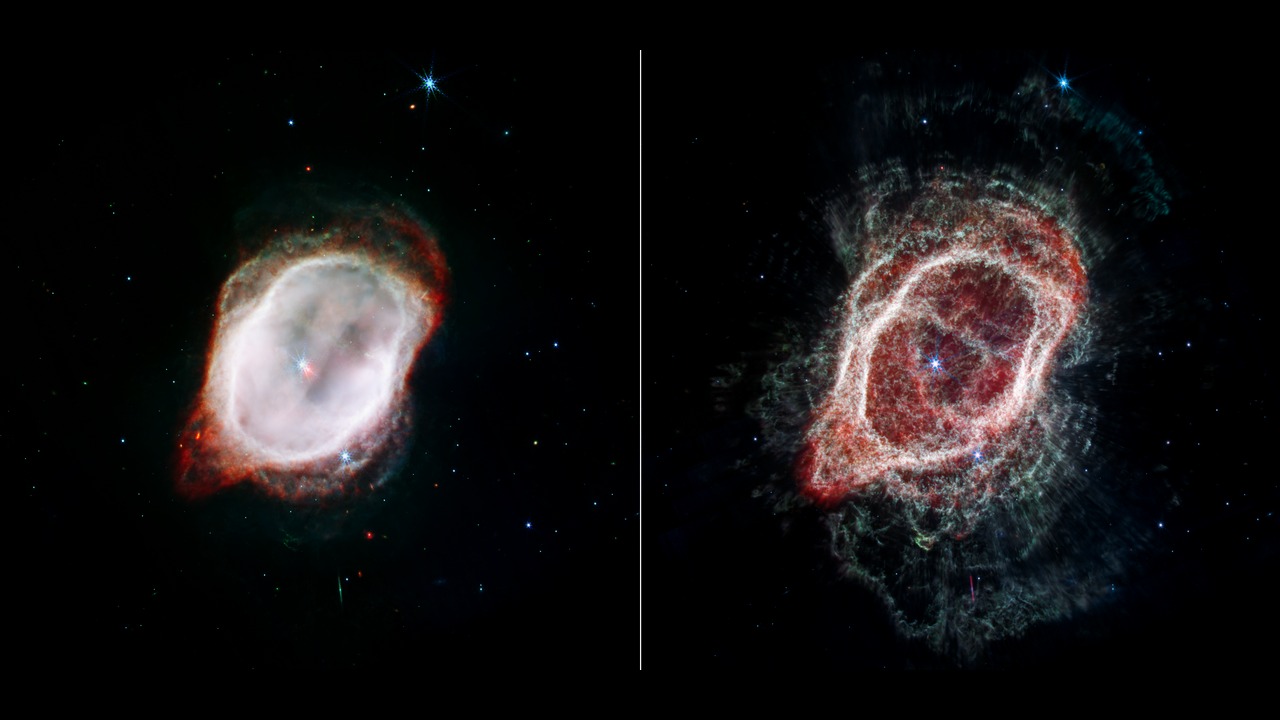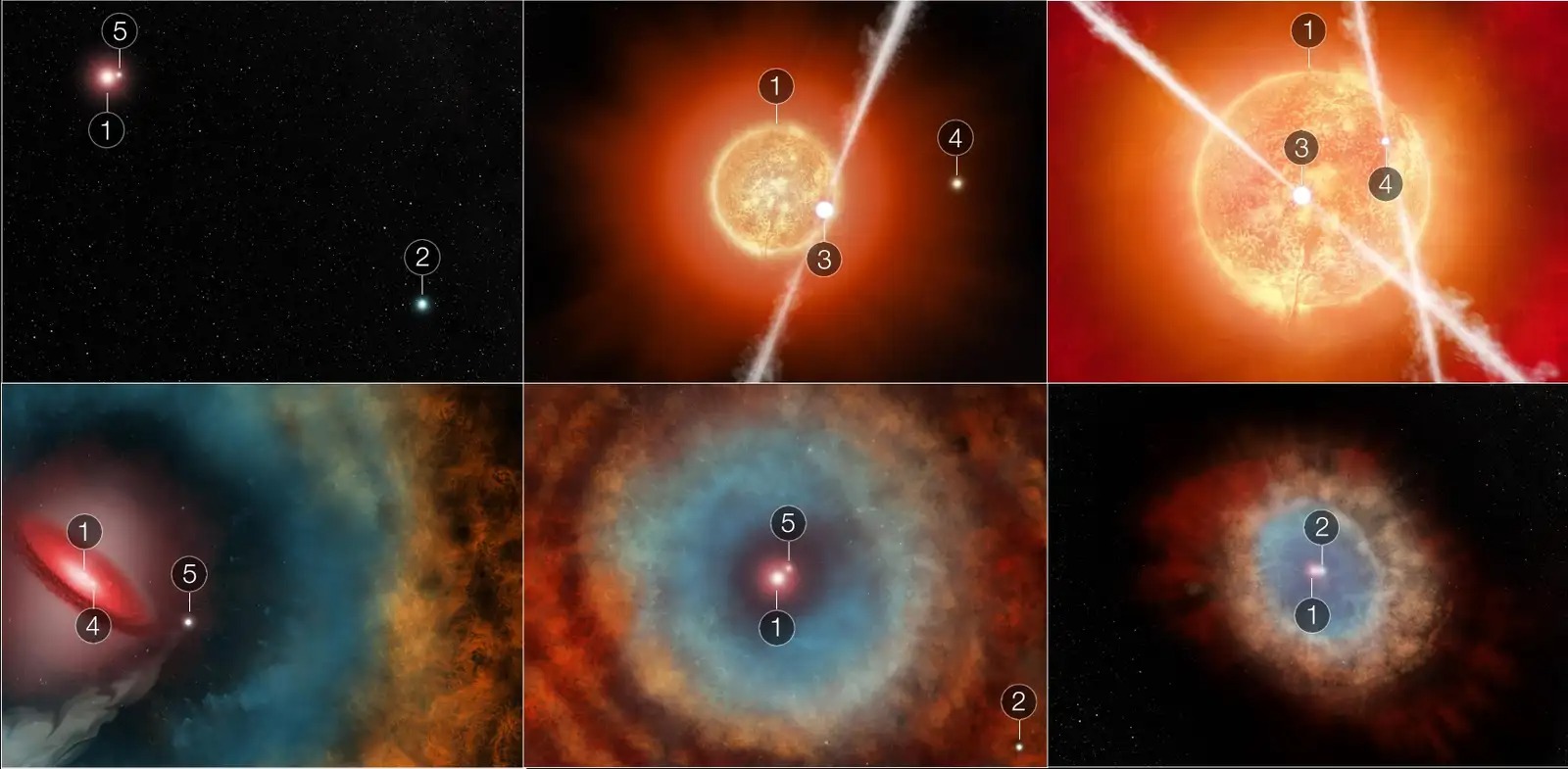When NASA released the first images of the James Webb Space Telescope this year, astronomers and space enthusiasts around the world were impressed by the kaleidoscope of incredibly detailed images of galaxies and nebulae. But among the first five images of this innovative telescope, one particularly stood out not only for its beauty, but also for its mystery — a striking portrait of the Southern Ring Nebula (NGC 3132) hid an important story. Now that astronomers have received a detailed picture of the nebula, they are ready to reveal the secret of its formation.

How the Southern Ring Nebula originated
The Southern Ring Nebula is one of the most beautiful objects in space. It was formed 2500 years ago. This is quite recently, at a time when Confucius and Buddha were still alive, and the Peloponnesian wars were about to begin. And during this interval, a star at a distance of 2,000 light-years from us died, ejecting gas from a newly formed white dwarf. White dwarfs are the stellar finale, they are formed when stars exhaust their nuclear energy and begin slow cooling over billions of years.

The star containing the nebula was about three times the size of the Sun and was 500 million years old. On a universal scale, the star was very young. For comparison, the age of our Sun is about 4.6 billion years, moreover, it should live at least another 10 billion years.
How did the death of a star happen
Thanks to the images of James Webb, reasonable calculations and mathematical modeling of the research team, it is now possible to study in detail the moments preceding the stellar light show of the Southern Ring Nebula. As the scientists vividly wrote in their study: “To reconstruct the events of the “murder scene” that led to the death of the progenitor of the planetary nebula NGC 3132″.

A team of 70 astronomers worked to determine that several stars could have been involved in the death of the central one. Their study of the death of a star is published in Nature Astronomy.
“We were surprised to find evidence of two or three companion stars, which probably accelerated its central star’s death,” said Orsola de Marco, an astronomer at Macquarie University and the study’s leader.
The full picture of the “murder scene”
The team’s investigation of the nebula’s origin was made possible by very accurate measurements of stars within the Southern Ring Nebula. It turned out that not one, but about five stars played a role in the formation of the nebula, which by their interaction formed a bright object NGC 3132. Next, the team created an illustration of how this could have happened in the past.

The bright star in the center of the nebula is the partner of the white dwarf (2), which formed the nebula and is located nearby (1). According to the team, previously there was a mysterious star (3) that ejected jets of matter during interaction with a dying star and covered it with dust before merging with it. Another star (4) picked up the gas and dust released by its predecessor, causing wavy ripples in the discarded matter. The fifth star (5) by its movement created a system of rings surrounding the nebula.
Researchers believe that the same methods that revealed the features of the birth of the Southern Ring Nebula can help uncover the secrets of the birth of other nebulae.
Earlier we reported that the oldest planetary nebula was found in the Universe.
According to WebbTelescope
Follow us on Twitter to get the most interesting space news in time
https://twitter.com/ust_magazine
